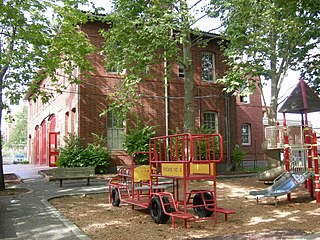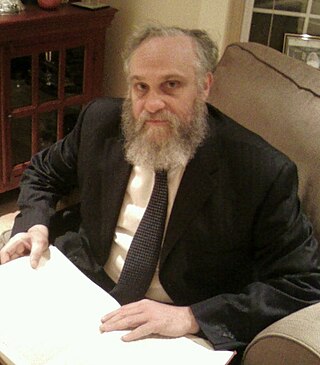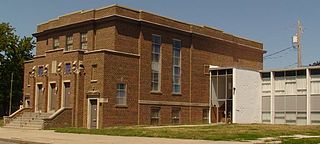
Seward Park is a neighborhood in southeast Seattle, Washington just west of the park of the same name. It is part of Seattle's South End. The park occupies all of Bailey Peninsula.

The Central Area, commonly called the Central District or The CD, is a mostly residential district in Seattle located east of downtown and First Hill ; west of Madrona, Leschi and Mt. Baker; south of Capitol Hill, and north of Rainier Valley. Historically, the Central District has been one of Seattle's most racially and ethnically diverse neighborhoods, and was once the center of Seattle's black community and a major hub of African-American businesses.

Benjamin Marcus Priteca was a Scottish architect. He is best known for designing theatres for Alexander Pantages.

Black Nativity is an adaptation of the Nativity story by Langston Hughes, performed by an entirely black cast. Hughes was the author of the book, with the lyrics and music being derived from traditional Christmas carols, sung in gospel style, with a few songs created specifically for the show. The show was first performed Off-Broadway on December 11, 1961, and was one of the first plays written by an African American to be staged there. The show had a successful tour of Europe in 1962, one of its appearances being at the Spoleto Festival of Two Worlds in Italy.

Moshe Kletenik is an American rabbi who was President of the Rabbinical Council of America.

Bikur cholim refers to the mitzvah to visit and extend aid to the sick. It is considered an aspect of gemilut chasadim. It is traditional to recite prayers for healing, such as the Mi Shebeirach prayer in the synagogue, and Psalms on behalf of the sick. Bikur holim societies exist in Jewish communities around the world. The earliest bikur holim society on record dates back to the early Middle Ages.

Congregation Beth Israel is an independent, traditional egalitarian Jewish congregation, located at 229 Murdock Avenue in Asheville, North Carolina. Founded in 1899 as Bikur Cholim, it was an Orthodox breakaway from Asheville's existing synagogue. It hired its first full-time rabbi in 1909, opened a religious school in 1911, and acquired its first building, which burnt down in 1916, in 1913.

Bikur Cholim Hospital was a 200-bed general hospital in West Jerusalem, established in the 19th century and closed due to financial difficulties in the second decade of the 21st century. Until then, it was the oldest hospital in the country still operating.

Sephardic Bikur Holim Congregation (SBH) is an Orthodox Jewish congregation and synagogue in the Seward Park neighborhood of Seattle, Washington, in the United States, that practices in the Sephardic tradition.

Congregation Bikur Cholim Machzikay Hadath is a synagogue in the Seward Park neighborhood of Seattle, Washington. It is the oldest synagogue in Washington state.

Temple De Hirsch Sinai is a Reform Jewish congregation with campuses in Seattle and nearby Bellevue, Washington, USA. It was formed as a 1971 merger between the earlier Temple De Hirsch and Temple Sinai and is the largest Reform congregation in the Pacific Northwest.
Bikur cholim or Bikur holim refers to the mitzvah to visit and extend aid to the sick. By extension, it may also refer to any Jewish organization that visits those in hospital or provides other services for them or their families. It also may refer specifically to any of the following.

B'nai Israel Synagogue is a synagogue in Council Bluffs, Iowa, United States. It is listed on the National Register of Historic Places by its original name Chevra B'nai Yisroel Synagogue in 2007.

The Bikur Cholim Synagogue is a historic religious building at 1545 Iranistan Avenue in Bridgeport, Connecticut. Built about 1894 for a Congregational church, it housed two different Jewish congregations from 1929 to 1989. After serving as a commercial establishment for a time, it now houses a Seventh-day Adventist congregation. The building is a distinctive example of the Shingle Style of architecture, and was listed on the National Register of Historic Places in 1995.

The Seattle Hebrew Academy is a private Kindergarten–grade 8 school, located in the Capitol Hill neighborhood of Seattle.
















